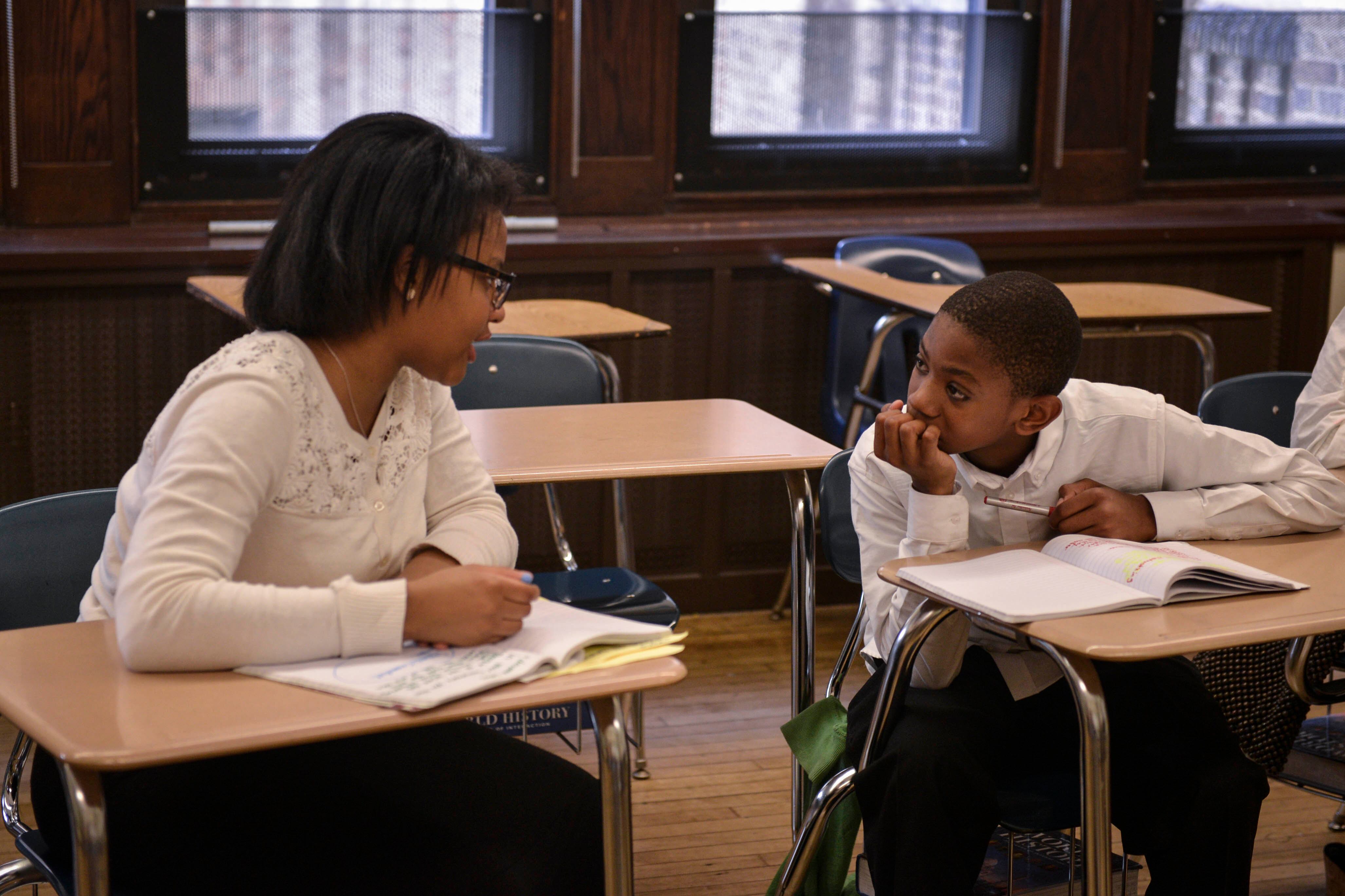Philadelphia’s new lottery admissions system will likely bolster the overall proportion of Black and Hispanic students in the incoming ninth grades across the city’s four most selective public schools, a Chalkbeat data analysis has found, although the picture varies significantly between individual schools.
At Central High School, for example, the largest and most well known of those four top-tier schools, the proportion of Black students in the incoming class is nearly twice as high as the prior year’s class, according to Chalkbeat’s analysis. And the corresponding share of Hispanic students has more than tripled.
Meanwhile, the size of the freshman class at Carver High School of Engineering and Science will increase by more than a third, so more students of all races will attend. But while Black students comprised 55% of last year’s class at the school, only 46% of this year’s incoming class is Black.
The changes to admissions — which affected all 21 of the district’s magnet programs — appear poised to considerably alter the racial makeup of several schools where Black and Hispanic students have been historically underrepresented compared to their citywide enrollment. Families throughout Philadelphia strive to have their children gain entry to these schools, and changes to how they work attract close scrutiny and intense debate.
Last year, the district changed the admissions process by placing qualified applicants in a lottery, rather than letting individual school principals continue to make final admissions decisions. For this year’s incoming ninth grade class, all students who met benchmarks based on grades, attendance, and scores on a writing test were entered into the lottery.
For the four most selective schools, which include Masterman and Academy at Palumbo, the district weighted the lottery to favor qualified students from six ZIP codes that rarely send students to four most selective high schools, automatically offering admission to all qualified students living in ZIP codes.
Historically, a minuscule fraction of students enrolled in those schools resided in those ZIP codes, which cover parts of North and West Philadelphia.
District officials said they wanted to make the system more equitable and antiracist. The goals of the changes were to increase access and participation among qualified students who may not have otherwise applied, and to eliminate any “implicit bias” from the selection process.
Several parents and students who live in the affected ZIP codes said they weren’t aware of the policy change and couldn’t say how it affected them. But Sheila Rosado is delighted with the new system. Her daughter, Esmeralda Miller, who lives in North Philadelphia in one of the six ZIP codes favored in the admissions process, is going to Central in the upcoming school year.
“We were worried that they changed the way they were doing things, but we didn’t have any issues. Every single school she applied to she got accepted,” Rosado said, adding that her daughter has always received top grades.
She said she thought the lottery was “awesome … it’s more fair, and more people can apply.”
A “successful” system will soon change again
Chalkbeat’s analysis of the four most selective Philadelphia magnet schools is based on the district’s tally of students who have accepted offers of admission. The students in the numbers provided by the district include only those who attended district schools prior to accepting offers, not those from charter and private schools who have sought admission.
In response to Chalkbeat’s request for comment about the analysis, the district said in a statement that the revised system had been “successful on all these fronts.”
There were disparate demographic trends for the incoming classes at Masterman and Palumbo.
The share of Black, Hispanic, multiracial, and white students at Academy at Palumbo all grew significantly from the ninth grade classes of 2021 to 2022, while Asian enrollment dipped from almost half of the student body to under a third.
At Masterman, where the incoming class is only 100 students and more subject to year-to-year fluctuations, Asian enrollment grew to 43% of the class. Meanwhile, Black and Hispanic enrollment dipped slightly, and white enrollment fell by 6 percentage points.
Between 2017 and 2021, just 1% of students at the four most selective schools came from the six favored ZIP codes. But 12% of the students in this year’s incoming class reside in those ZIP codes, ranging from 11.1% at Central to 13.5% at Masterman.
More broadly, there were 11,479 eligible applications to all 21 selective schools for 2022, nearly double the number from 2021, officials said.
Although the new system seems to have led to significantly different outcomes than in past years, Philadelphia’s selection admissions process continues to evolve.
On Tuesday, the district announced that while the lottery system for selection admissions would continue, scores from the Pennsylvania System of School Assessment, or PSSA, would be reintroduced into the admissions process for the 2023-24 school year.
The state assessment, which was not administered in 2020 and 2021 due to the pandemic, had been replaced in the selective admissions process by a separate writing test, which will now be discontinued.
District spokeswoman Marissa Orbanek said the district reintroduced the PSSA to the admissions process “because we need another criterion.” But some principals worry that using the test will whittle down the eligible pool of students.
Orbanek said the district doesn’t know the impact the elimination of the PSSA may have had on the growth of the student applicant pool for the selective schools this year, or on the higher proportions of Black and Hispanic students in the pool. But, she said, the district plans to continue studying the data and gather feedback “to continue its commitment to providing equitable access for all students.”
The district will share new minimum PSSA scores for selection admissions at the end of September.
Overall, 36% of students in Philadelphia scored proficient on the PSSA’s language arts test from 2019 (the most recent results available), while 21% did so in math, and 36% in science. But results differ markedly by race and ethnicity.
For instance, while 55% of Asian students and 42.5% of white students scored proficient in math, just 11.6% of Black students and 13.8% of Hispanic students scored at that level.
There is also concern that some students may have opted out of the PSSA last spring because they believed that the PSSA would not be a factor in 2023-24 special admissions. The district said public school students who did not take the test could substitute scores on certain other tests, although that could present logistical challenges to families.
There are three levels of so-called criteria-based schools and programs, all with differing requirements regarding grades. But all three of those levels mandate 95% attendance.
Dale Mezzacappa is a senior writer for Chalkbeat Philadelphia, where she covers K-12 schools and early childhood education in Philadelphia. Contact Dale at dmezzacappa@chalkbeat.org.







